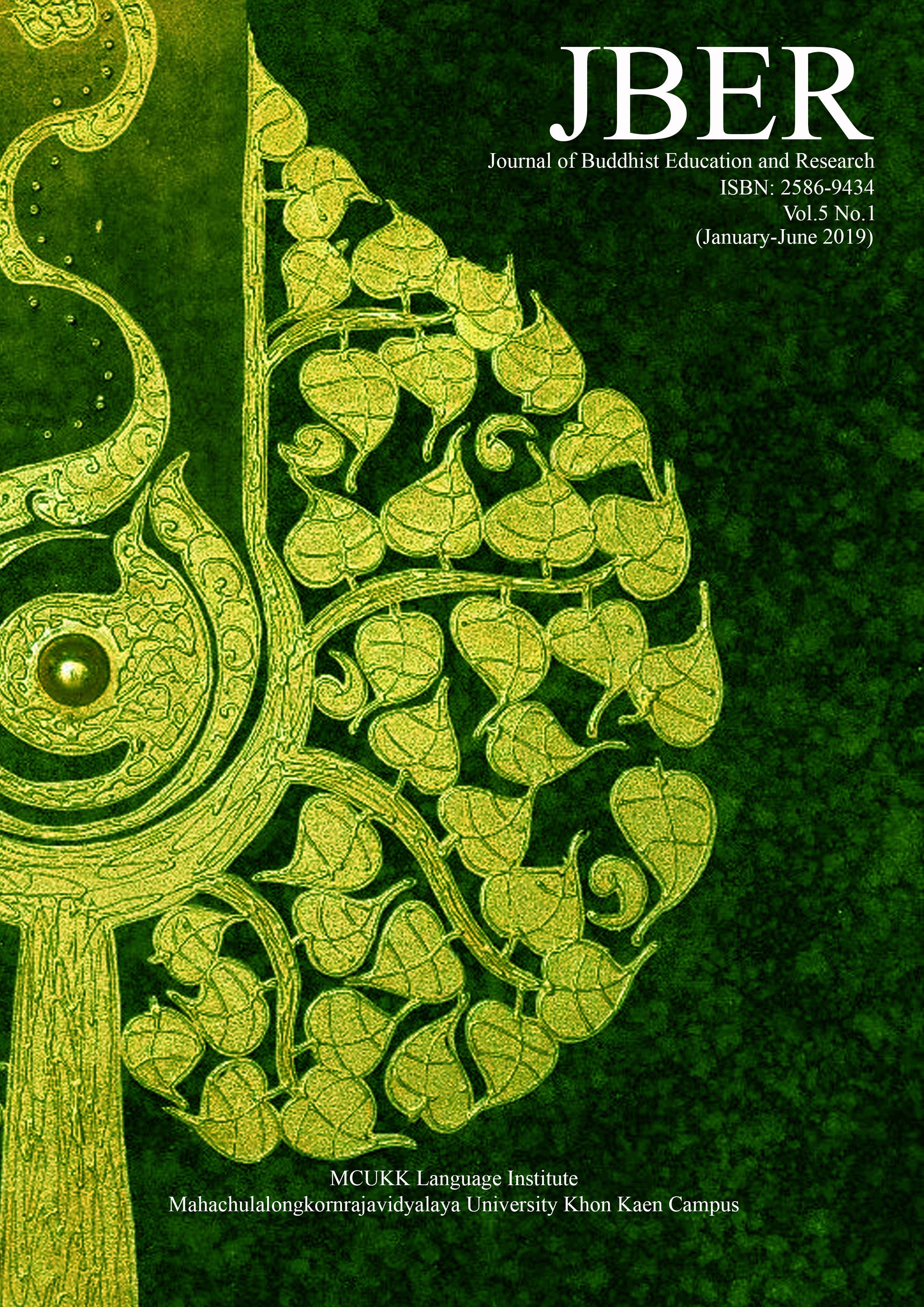Remaining Innovative in the Pristine Form: The Relevance of the Thai Forest Tradition to the Contemporary World
Keywords:
Remaining Innovative, Pristine FormAbstract
Northeast Thailand (Isan) was the home of many great meditation masters whose lineage remains influential even at the present time. The austerity in the practice of meditative mindfulness that accompanied the strict adherence to vinaya or monastic disciplinary codes had made many monks of the forest tradition accomplished meditation masters, whose profound teachings are today widely disseminated across the globe. The collected teachings of such highly venerated monks as Ajahn Mun, Ajahn Sao, Ajahn Thet, Ajahn Chah, and others form a corpus of reflective guidelines for the cultivation of mental well-being that is not only conducive to individual moral growth but also for communal spiritual health and mental well-being along the path set forth by the Buddha more than two millennia ago. In today’s excessively consumption-oriented ambience that has had many pernicious and adverse effects on the overall mental well-being of people from every stratum of society, the teachings of the forest tradition monks become highly relevant to set the wheel of human progress acquire a balanced momentum. The relevance of the teachings arise from both their profundity and practical applicability, since underneath the teachings lay accumulated knowledge of each of the meditation masters, gathered over years of experiential quest to lead the mind to acquire that level of mindful understanding which is absolutely free from defilements and egoistic clinging. Buddhist and non-Buddhist alike can gain from the teachings because the underlying messages embodied in them are free from sectarianism. The universality in the praxis can be applied at any time and situation by any interested person, irrespective of religious and cultural background. In this paper we bring forth the universal garb of the teachings by first focusing on the different levels at which the forest tradition monks’ practice benefits the mind, then highlight the contemplative thinking of the monks vis-à-vis Derridean deconstruction and finally conclude by reflecting on the lessons to be learnt from the forest tradition to solve various problems.
References
Anguttara-nikaya. PTS edition.
Derrida, Jacques. (1992). The Gift of Death. Trans. David Wills, Chicago: University of Chicago Press, 1995.
Jaware, Aniket. (2001). Simplifications. New Delhi: Orient Longman Lt.
Kornfield, Jack and Breiter, Paul ed. (1985). A Still Forest Pool – The Insight
Meditation of Achaan Chah. Illinois: The Theosophical Publishing House.
Magliola, Robert. (1984). Derrida on the Mend. Purdue University Press.
Mahasi Sayadaw. (1996). The Great Discourse on Not Self (Anattālakkhana Sutta).
Bangkok: Buddhadhamma Foundation.Majjhima-nikaya. PTS edition.
Payutto, P.A. (1995). Buddhadhamma, Albany: State University of New York Press.
Payutto, P.A. (1994). Buddhist Economics. Bangkok: The National Identity Board.
Rahula, Walpole. (1990). What the Buddha Taught Bangkok: Haw Trai Foundation.
Downloads
Published
How to Cite
Issue
Section
License
Copyright (c) 2020 Journal of Buddhist Education and Research

This work is licensed under a Creative Commons Attribution-NonCommercial-NoDerivatives 4.0 International License.





